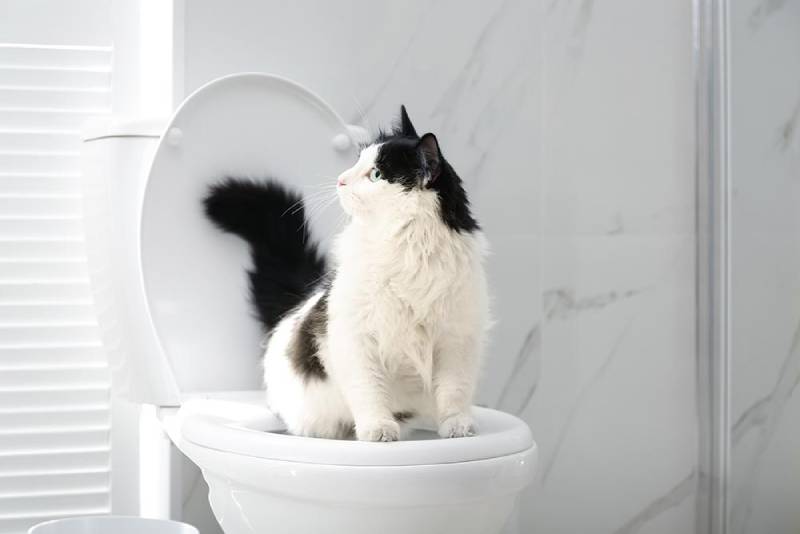The article author is making a few good pointers on the subject of How to Dispose of Cat Poop and Litter Without Plastic Bags overall in this great article down the page.

Introduction
As pet cat owners, it's vital to be mindful of how we take care of our feline pals' waste. While it may seem hassle-free to flush pet cat poop down the toilet, this technique can have harmful effects for both the environment and human health and wellness.
Environmental Impact
Purging cat poop introduces unsafe microorganisms and bloodsuckers into the water system, posing a considerable threat to aquatic ecological communities. These contaminants can adversely influence marine life and compromise water top quality.
Health Risks
In addition to environmental worries, flushing pet cat waste can also pose health and wellness dangers to humans. Cat feces may contain Toxoplasma gondii, a bloodsucker that can trigger toxoplasmosis-- a potentially severe ailment, specifically for expecting women and people with damaged body immune systems.
Alternatives to Flushing
Thankfully, there are safer and extra accountable ways to take care of feline poop. Consider the complying with options:
1. Scoop and Dispose in Trash
The most common technique of throwing away feline poop is to scoop it into an eco-friendly bag and throw it in the trash. Be sure to utilize a dedicated trash inside story and get rid of the waste quickly.
2. Use Biodegradable Litter
Go with naturally degradable cat clutter made from materials such as corn or wheat. These litters are eco-friendly and can be securely thrown away in the trash.
3. Bury in the Yard
If you have a yard, think about hiding feline waste in a designated area far from vegetable yards and water resources. Make sure to dig deep adequate to stop contamination of groundwater.
4. Install a Pet Waste Disposal System
Buy a pet waste disposal system especially developed for cat waste. These systems make use of enzymes to break down the waste, lowering smell and environmental impact.
Conclusion
Liable pet dog possession prolongs beyond supplying food and shelter-- it likewise involves correct waste administration. By avoiding purging cat poop down the bathroom and going with different disposal methods, we can lessen our ecological impact and protect human health.
Why Can’t I Flush Cat Poop?
It Spreads a Parasite
Cats are frequently infected with a parasite called toxoplasma gondii. The parasite causes an infection called toxoplasmosis. It is usually harmless to cats. The parasite only uses cat poop as a host for its eggs. Otherwise, the cat’s immune system usually keeps the infection at low enough levels to maintain its own health. But it does not stop the develop of eggs. These eggs are tiny and surprisingly tough. They may survive for a year before they begin to grow. But that’s the problem.
Our wastewater system is not designed to deal with toxoplasmosis eggs. Instead, most eggs will flush from your toilet into sewers and wastewater management plants. After the sewage is treated for many other harmful things in it, it is typically released into local rivers, lakes, or oceans. Here, the toxoplasmosis eggs can find new hosts, including starfish, crabs, otters, and many other wildlife. For many, this is a significant risk to their health. Toxoplasmosis can also end up infecting water sources that are important for agriculture, which means our deer, pigs, and sheep can get infected too.
Is There Risk to Humans?
There can be a risk to human life from flushing cat poop down the toilet. If you do so, the parasites from your cat’s poop can end up in shellfish, game animals, or livestock. If this meat is then served raw or undercooked, the people who eat it can get sick.
In fact, according to the CDC, 40 million people in the United States are infected with toxoplasma gondii. They get it from exposure to infected seafood, or from some kind of cat poop contamination, like drinking from a stream that is contaminated or touching anything that has come into contact with cat poop. That includes just cleaning a cat litter box.
Most people who get infected with these parasites will not develop any symptoms. However, for pregnant women or for those with compromised immune systems, the parasite can cause severe health problems.
How to Handle Cat Poop
The best way to handle cat poop is actually to clean the box more often. The eggs that the parasite sheds will not become active until one to five days after the cat poops. That means that if you clean daily, you’re much less likely to come into direct contact with infectious eggs.
That said, always dispose of cat poop in the garbage and not down the toilet. Wash your hands before and after you clean the litter box, and bring the bag of poop right outside to your garbage bins.
https://trenchlesssolutionsusa.com/why-cant-i-flush-cat-poop/

As a passionate reader about How to Dispose of Cat Poop and Litter Without Plastic Bags, I imagined sharing that excerpt was a smart idea. Liked our content? Please share it. Help other people find it. We cherish reading our article about Don’t flush cat feces down the toilet.
Call Today